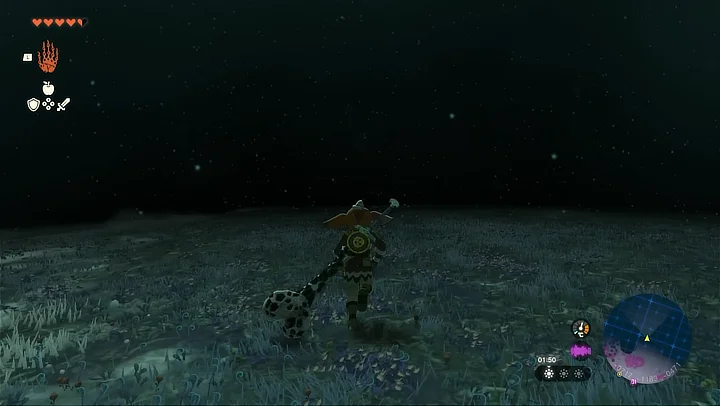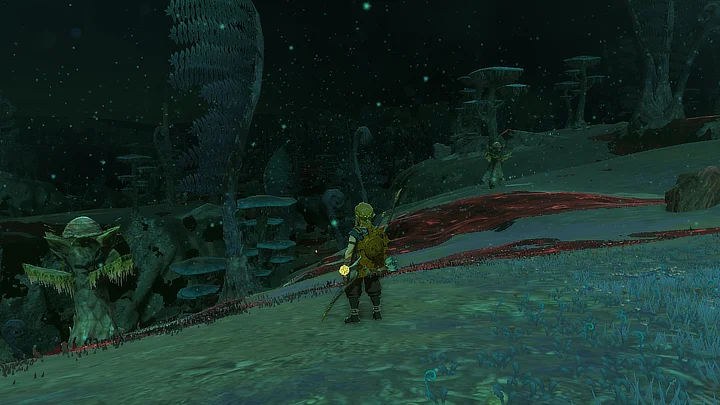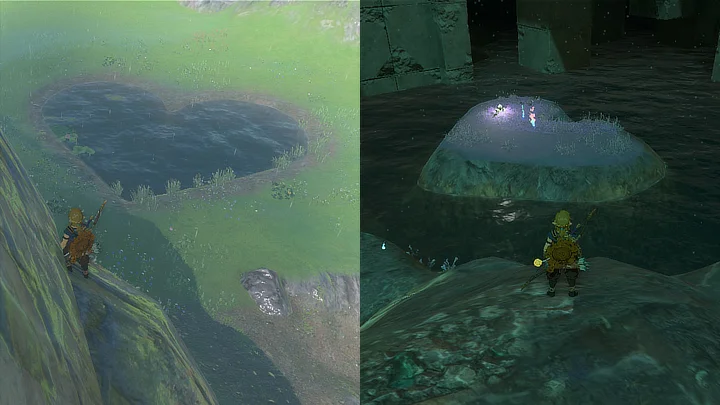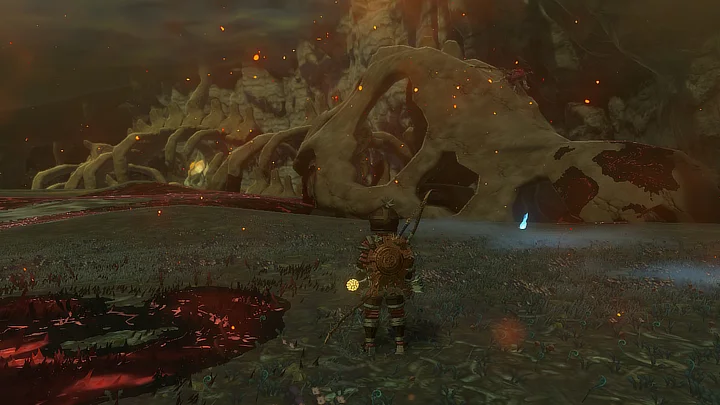The Zelda Depths Are Cooler Than I Thought!
30 March 2025
Recently I’ve been watching Leo slowly one hundred percent Zelda: Tears of the Kingdom, and it’s been an enjoyable time. Every time I walk by I see something new that I either didn’t know existed, or had more depth, heh, than I originally thought it had.
For context my own playthrough of TotK wasn’t exactly a rushed one, but I certainly spent less time in this version of Hyrule compared to the Breath of the Wild original. As incredible a game it is, there was a certain degree of been here done that in my mind, which in retrospect was me cheating myself out witnessing of a lot of the vast improvements to side quests and the living breathing nature of the world. One of sections I almost entirely glossed over is the depths.

The darkness of the depths.
If you’ve never played Tears of the Kingdom, and I highly recommend you do, the depths are a subterranean area of Hyrule. Initially unlit, they’re as large in scale as the entire overworld, filled to the brim with tough enemies and other goodies, abilities, armor, build recipes etc. To explore you have to find and activate Lightroots, which act as sort of depths lighthouses. When activated a large area around each lightroot is illuminated. This all sounds great, but my problem with the depths is how homogenous they felt in practice. There are no biomes outside of the grey-ish ground and cliffsides, and constant darkness obscuring most of the landscape. I found it very hard to create a mental map of the depths, and thinking about them they’ve got a very blobby sort of feel. Not helped by spending most of my time down there beelining towards the next lightroot on my way to whatever I was doing down there.

The depths lit up. It's still gloomy, but you can see much further!
What I didn’t know was that if you successfully activated all the lightroots, one hundred and twenty in total, the entire depths are lit up. Silly to write out, but actually being able to see has a pretty transformative effect on the landscape. Commenting on that, Leo pointed out that the depths are an inverted Hyrule with many points of interest shared between them. For me, that was a pretty mind blowing revelation. The game does point out that Lightroots are mysteriously located underneath shrines, encouraging a back and forth exploration of the depths and overworld if you’ve found one but not it’s partner, but there’s a similar pairing for many objects.

An example of the heightmap inversion.
- The depths follow the general rule of having an inverted overworld heightmap, with changes made to clean it up. An easy way to confirm this is matching the point of any mountain, or through small landscape features like the heartpond, which become tuft mountain.
- Rivers and water sources are fully impassable cliffs. This is a looser rule, as there is a lot of water in the overworld, but can be helpful for navigation.
- Shrines become Lightroots, with their names reversed.
- Goddess Statues become Bargainer statues.
- Each city in the game has a depths mine. Most useful for their accompanying Zonai Shop.
- Wild horse herds become Stalhorse spawn locations.
- The Colosseum has a matching depths colosseum, filled with Lynels.
- There’s always a Lynel below a horse stable.
- Mountain peaks in the overworld become mines, each one containing a chest.
- Great Skeletons on the surface become Giant Skeletons. They’re way larger and cooler, and contain a bonus chest.
- Certain landmarks have a more thematic link, e.g. Satori Mountain becomes the Blupee Burrow.

Rad giant skeletons.
I didn’t have more to say other than “Wow, I thought this was cool”. This post is itself an incredibly shallow look at a single neat aspect of the depths, because while there's clearly a lot of thought put into what I've written about here, there's also a lot more including boss fights, story critical dungeons, Yiga camps etc. I suppose this is a message to myself. Play the next Zelda game just a tad slower, and look around.